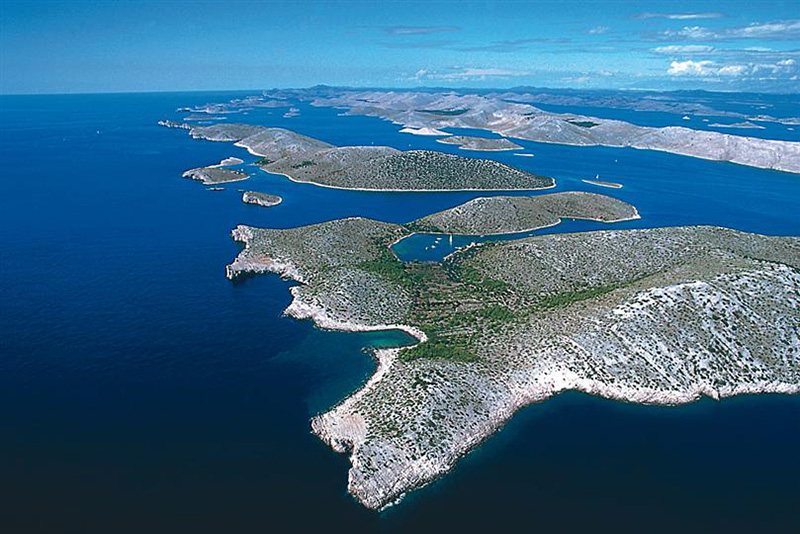
Murter
The island of Murter is located near Sibenik and Vodice in the center of the Adriatic coast. It is near the continent so that it is accessible by a bridge. Island Murter is the gateway to the Kornati archipelago unique islands and reefs, natural Croatian National Park, a paradise for navigation. Among the villages on the island of Murter, Betina and Murter is located north of the island, whîle Tisno is located next to the connection of the island with the land and has long beaches along which stretches the shade of a pine forest. Jezera is a little further south. Each village has a number of beds in apartments and hotel, a marina, campsites and other tourist facilities including 37 restaurants. Traditional fishing you can enjoy fish specialties.
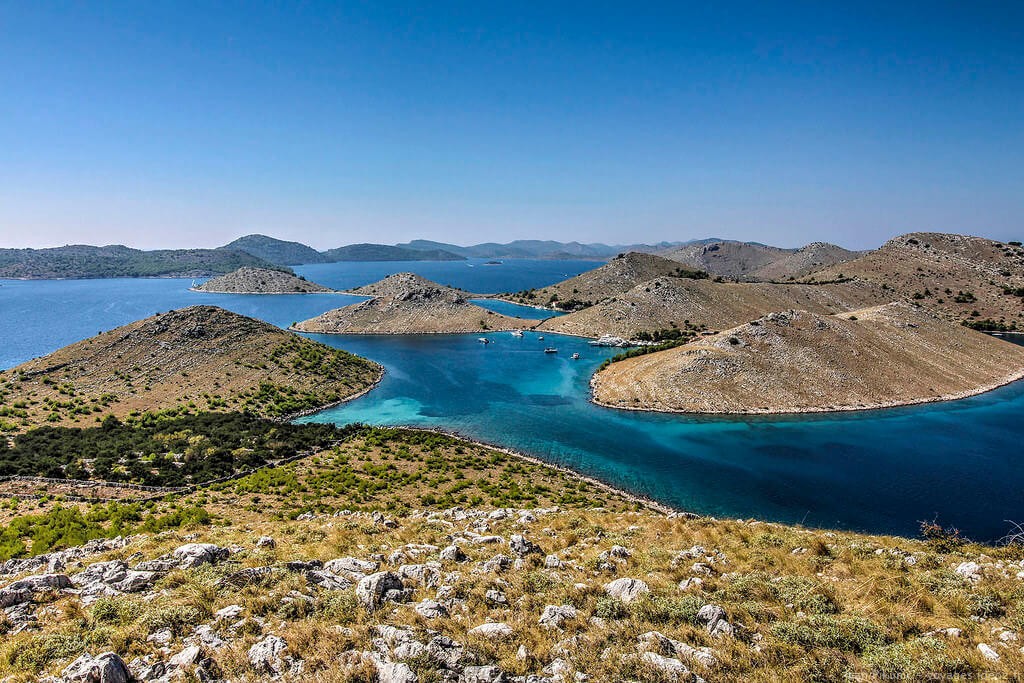
Les kornatis
The Rosary of the Kornati islands stretches off the coast of northern Dalmatia. Several hundred islands and islets (rarely populated) and rocks emerging from the sea creating an extraordinarily colorful world. Nautical tourism is highly developed and two marinas are still on the archipelago of Kornati. The most famous beach is Slanica Bay with its sandy beach.The Rosary of the Kornati islands stretches off the coast of northern Dalmatia. Several hundred islands and islets (rarely populated) and rocks emerging from the sea creating an extraordinarily colorful world. Nautical tourism is highly developed and two marinas are still on the archipelago of Kornati. The most famous beach is Slanica Bay with its sandy beach.
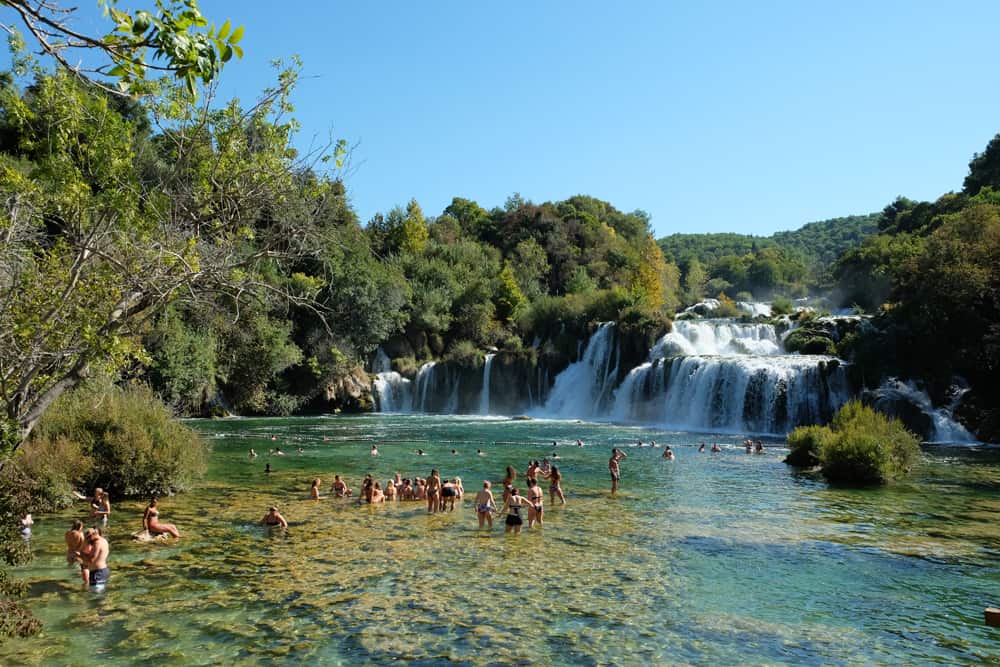
Krka
The river Krka is karst phenomenon, which by creating his way to the sea, forms lakes, waterfalls and numerous rapids. Its source is at the foot of the mountain Dinara, near the town of Knin. For its natural beauty and geological features, most of the territory was declared a National Park in 1985. The surface of the Krka National Park is 109 km2 along the river Krka or two kilometers from the city of Knin to the City of Skradin.
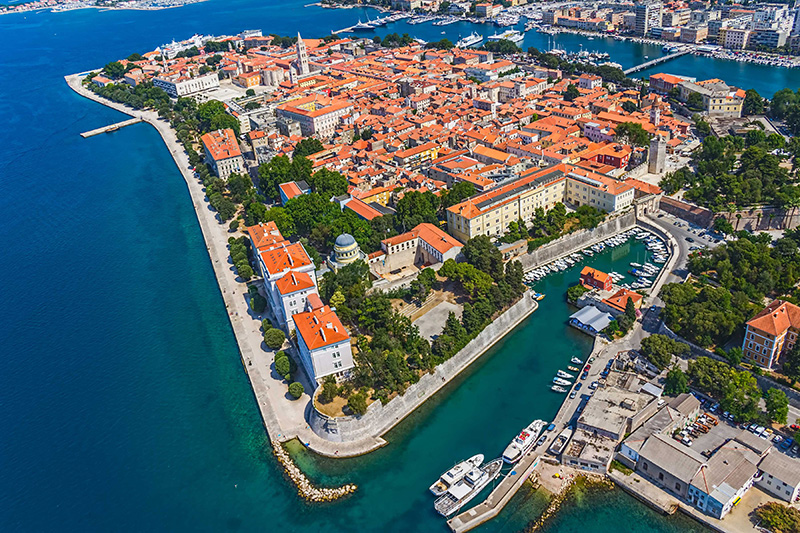
Zadar
Zadar is an old historic town of over 3000 years and has a heritage of great value. Located in the heart of the Adriatic, it combines the beauty of the past and all the amenities sought by modern travelers and offers many attractions. This is one of the most popular tourist destinations in Croatia, and the Times of London proclaimed "entertainment center of the Adriatic", and the Guardian said that it is "cool new capital of Croatia". The turbulent history of this city has left many scars on her, but also a valuable cultural heritage. The specialties of the city are the historical and cultural heritage. Different historical periods have been preserved in many churches and cultural monuments which are visible on the artistic architecture of all time. The most famous monuments are among others the church of St. Donat (symbol of the city of Zadar and the most famous monumental buildings in Croatia from the early Middle Ages (9th century)), the Cathedral of St. Anastasia (Romanesque building, also the largest church in Dalmatia, was built on two occasions in the 12th and 13th century) Church of St. Simeon (Christian church, which houses the most popular saint of Zadar - San Simeon), the church and monastery of Santa Maria (Benedictine monastery), the church and the monastery of Saint Francis (Dalmatian old church built in Gothic style, the monastery was founded at the life of St. Francis of Assisi), the ramparts, fortifications and gates (through the walls of many summers were pierced doors, there were thirty, survived only eight), the Church of St. Grisogono (three-aisled basilica with three semicircular apses richly decorated Romanesque), the palace Grisogono, Vovo and Providurovu.

Split
For the record, it is the inhabitants of a town once a rival of Split, Salona, ??which hunted by barbarians in 600, took refuge in the remains of the palace that belonged to Diocletian, which was built to take a sort of early retirement, after his abdication in 305. So it was a squat old who later became the medieval town! Nearly 3000 people live there today. The palace has several important monuments to see the peristyle, the mausoleum, the hall, the temple, the Sphinx. Be guided, much useful information will be provided during your visit. Count each time a dozen Kuna (1.50 euros) to visit these monuments. Do not forget to climb to the top of the bell tower of the mausoleum, it will give you no doubt some chills! A good pizza is made to you cheap on one of the many sunny terraces seen at every turn lanes.
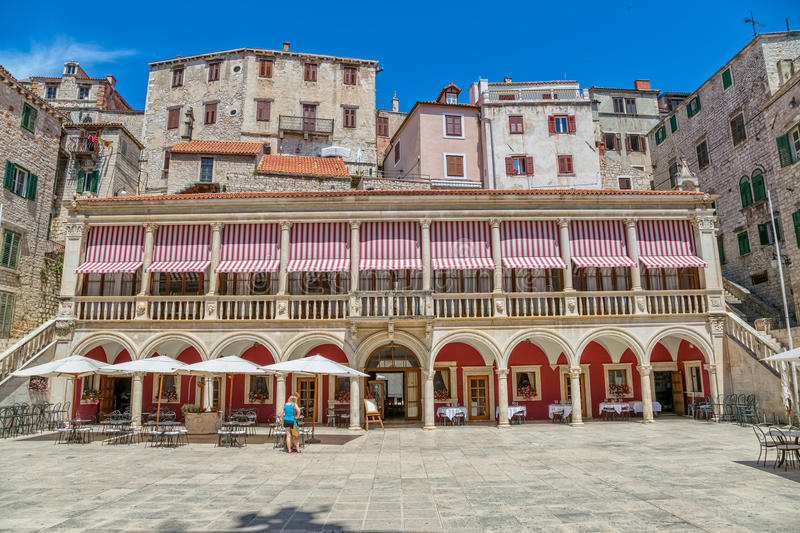
Sibenik
Sibenik, founded in the tenth century on the edge of a deep bay, was a short period the Croatian capital of the Kingdom. The historic center of the old town, with winding streets and the fortress of Saint Anne dominates, are its main attractions. Its true cultural treasure is the cathedral of St. Jacques, built between 1431 and 1535 by Italian artisans and Dalmatian in Gothic and Renaissance styles. Its unique beauty and harmony to his being listed as World Cultural Heritage by UNESCO. Excursions to national parks (Plitvice, Paklenica, Krka and Kornati) and in historic cities (Split, Trogir and Zadar) are available on site.